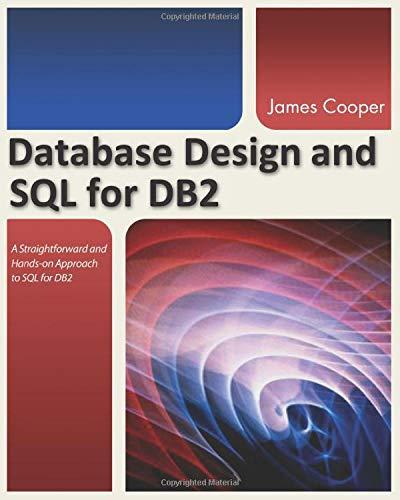Question
Can somebody help me with the Use Case Diagram . I am confused of what I am suppose to do. Here are the instructions :
Can somebody help me with the Use Case Diagram . I am confused of what I am suppose to do.
Here are the instructions :
Your team should produce a Use Case Diagram and the associated Use Case Descriptions/Narratives for all the use cases in the diagram. The resulting document should havethe professional look and produced by a word processor, graphics/presentation/drawing software, and/or a CASE tool (e.g., Microsoft Word, Microsoft PowerPoint, ArgoUML, Dia, Visual Paradigm, Visio, etc.). All project documentation must be handed-in no project assignment will be accepted via email.
Your team is the expert in object-oriented requirements, analysis, software design, and software development. It is your teams job to build a system that will satisfy the minimum requirements specified in Section III below. The bottom line build a system to help a local college library to automate and to improve their manual processes as much as possible. Remember the requirements are incomplete so be creative and use your imagination to build a complete Use Case Model.
REQUIREMENTS
A private liberal arts college library in the northeastern United States needs a new Library Information and Administration System (LIAS) to track and manage its resources. They wanted a computerized system to replace the current manual processes. The most obvious resource the library must manage is its books. Books are checked out, checked in, and requested by library patrons. Books can also have special status if they are placed on reserve or if they are reference books. In either case, such books may not leave the premises. Reminders are mailed to patrons when resources are more than two weeks overdue. Patrons are fined $0.25 per day that books are overdue. Students cannot obtain their diplomas if they have overdue charges that do not clear from the library.
The library also has other resources that may be checked out, including music CDs, software, audio tapes, and videos (VHS tapes and DVDs/BDs), each of which may only be checked out for one week at a time.
There are two types of patrons in this college library: faculty/staff and student. A student works for a library does not classify as a staff. Faculty/staff may check out books for three months, and student may check them out for 2 weeks. Any checkable library resource may be renewed as long as no other patron has requested it. Notice will be sent out when the resource is available to the patrons who put a hold on the resource. A requested resource will be held for two weeks for a patron. If it has not been checked out within two weeks, the resource will be returned to general circulation.
Faculty may place a book on reserve for the period of one semester, or they may bring in foreign resources (books, papers, disks, music CDs, magazines, video tapes, DVDs/BDs, or audio tapes that do not belong to the library) and put them on reserve.
The library must also manage a large selection of weekly, monthly, and quarterly magazines and journals, which may not be checked out but are available as reference materials. These magazines and journals are annually bound into volumes as reference books. Additional activities of the library staff include re-shelving books, renewing magazine/journal subscriptions, and ordering new library resources.
In automating the manual processes, LIAS should allow patrons to browse all the library resources on-line (users should be able to search on-line catalog by author, subject, keyword, resource title, or Dewey call number). Patrons should be able to renew check-out items on-line. LIAS must also connect to the holdings of a nearby local public library so that interlibrary loan requests can be fulfilled.
Several library staffs are classified as LIAS administrators. LIAS administrator maintains user information. His/her responsibility includes the acquisition and retirement of books in the library collection. In acquiring new books, a balance between meeting the requests of patrons and achieving a representative breadth in the collection is sought. Books are retired when their content is deemed to be out of date and of no historical value. Ideally, when a book is out of date, it will not be retired until a more up-to-date resource has replaced it in the librarys collection.
LIAS should authenticate and distinguish the functionalities for two groups of user: library patrons (faculty/staff and student) and LIAS administrators.
LIAS will be able to generate some useful reports. Only the administrators can generate and access these reports. Examples of useful reports include expiration dates of magazine/journal subscriptions, number of books in each category (e.g., history, computer science, and so on), book usage (so that additional copy of the same book maybe needed), library statistics (patrons, newspapers, magazines, journals, books, or any other library resources), etc.
I will rate thump up for you once you post the solutions.
Step by Step Solution
There are 3 Steps involved in it
Step: 1

Get Instant Access to Expert-Tailored Solutions
See step-by-step solutions with expert insights and AI powered tools for academic success
Step: 2

Step: 3

Ace Your Homework with AI
Get the answers you need in no time with our AI-driven, step-by-step assistance
Get Started


